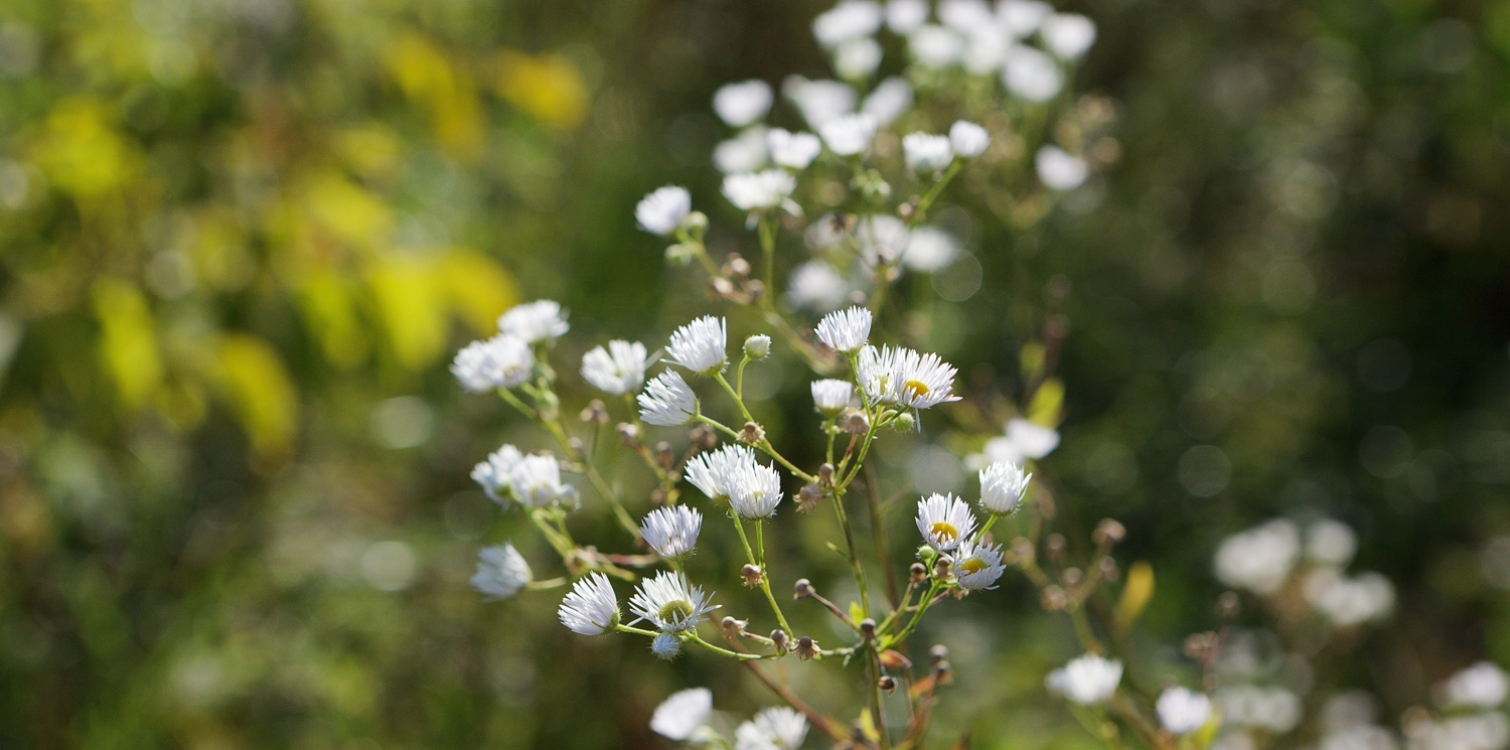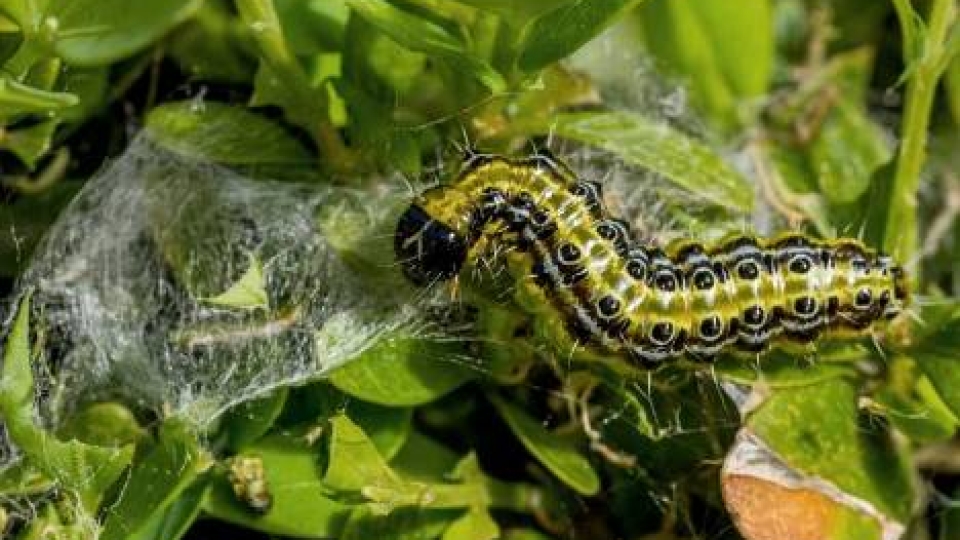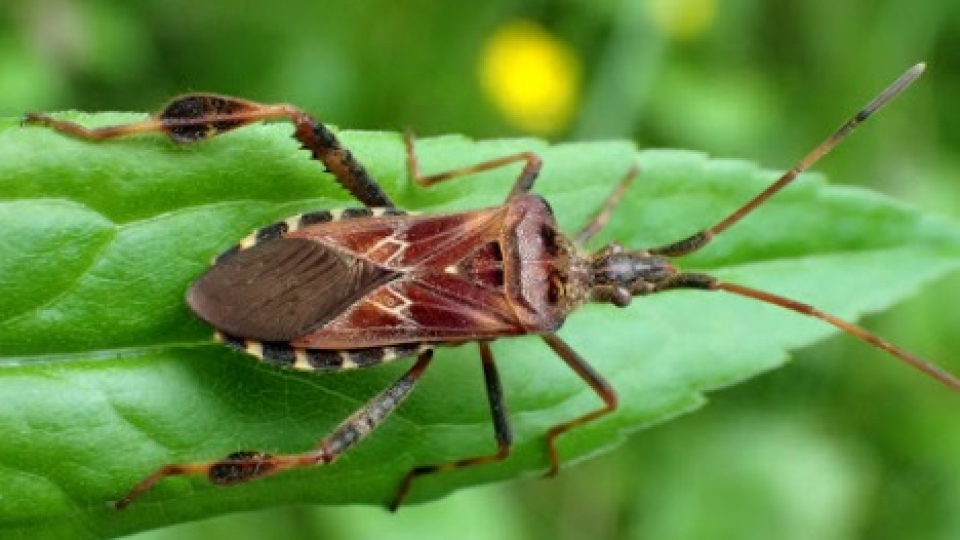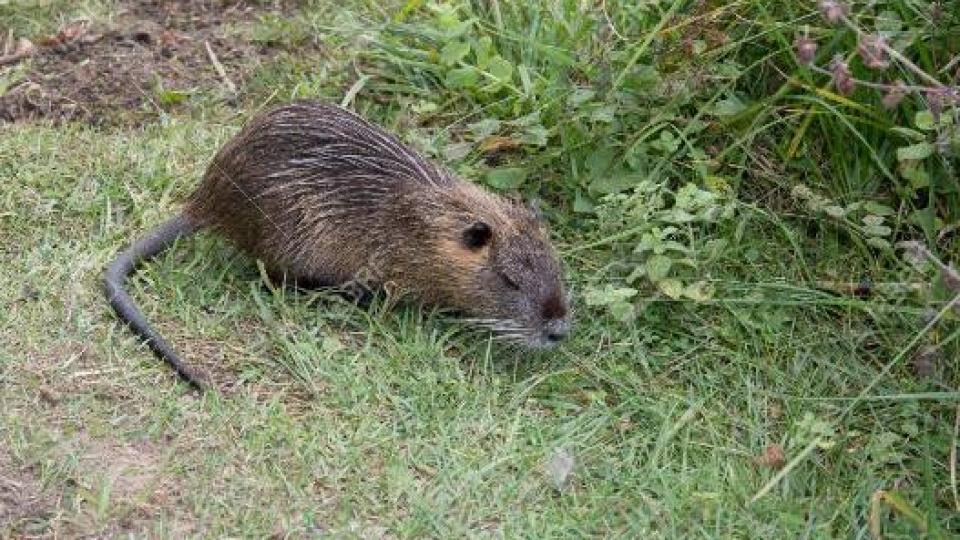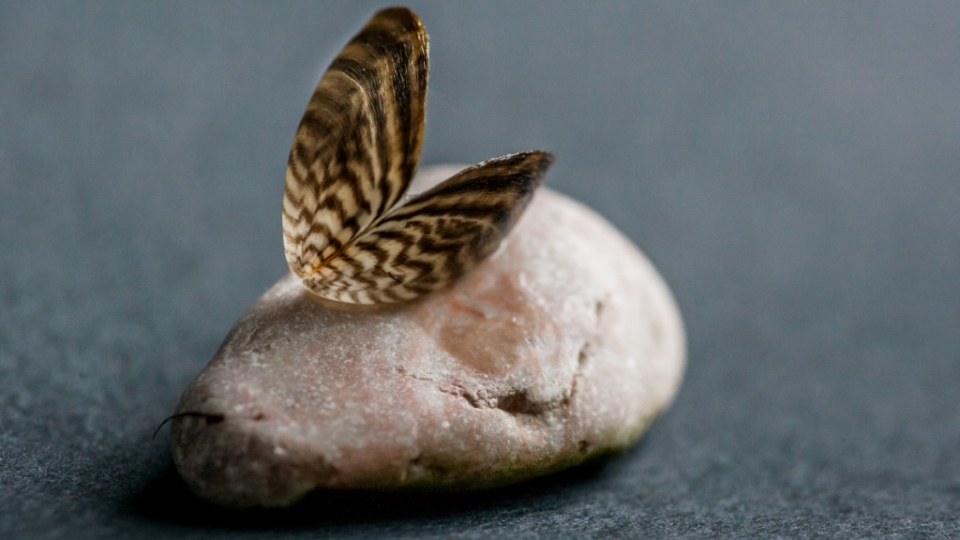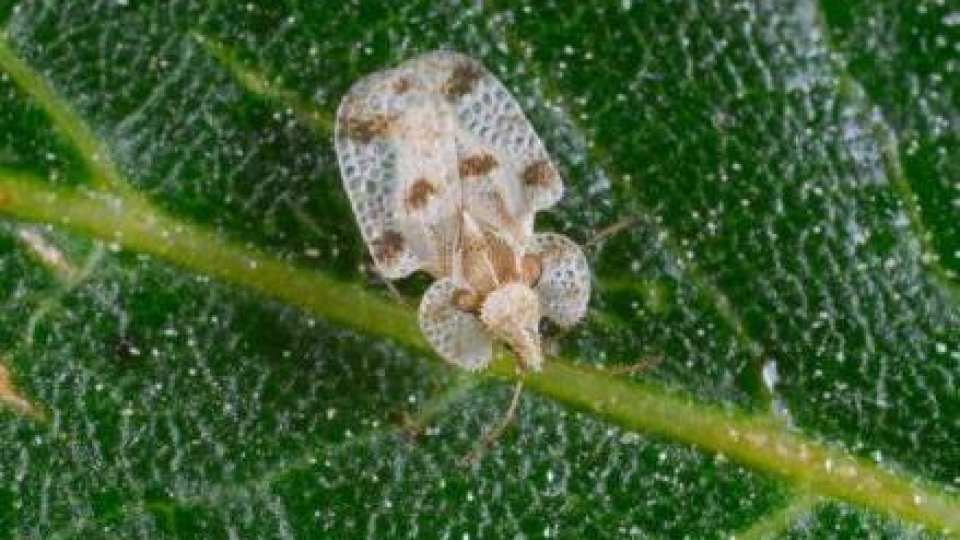Box tree moth
(Cydalima perspectalis)- Origin:
- East Asia
- Description:
- The adult Pushpan's wingspan is between 3 and 4 cm across. The base colour is dirty white, but the wing edges are a darker brown. The body of the butterfly is initially dirty white but turns brown with age. Butterflies are good fliers, but they do not fly far and are active day and night. Females lay eggs 1 mm in diameter on the underside of uninfected leaves of the host plant. After a few days, the eggs hatch into 1 to 2 mm long caterpillars, which feed on leaves and apices for the next four weeks, reaching a final length of 35 to 40 mm. When young, the caterpillars are fluorescent green with longitudinal streaks of black, a black head and black spots. They eventually turn brownish. After feeding is over, they wrap themselves among the twigs of the infested plant. The beetles are initially green with brown longitudinal stripes, later turning brown. They measure between 25 and 30 mm in length.
- Habitat:
- It can be found on pine bushes in natural habitats and urban areas.
- Prevalence:
- /
Western conifer seed bug
(Leptoglossus occidentalis)- Origin:
- North America
- Description:
- Reddish-brown warbler with elongate body. The flattened edge of the rump with alternating light and dark bands. Antennae are made of 4 elongate segments. In adult females and larvae, the tibiae of the hind legs are leaf-shaped. The larva (nymph) is tiny, reddish and long-legged. It is a polyphagous plant on conifers, where adults and larvae suck flowers and seeds. The adults overwinter in cracks in the bark and in various natural cavities, often in human dwellings. Damage to seeds can disrupt the rejuvenation of conifers.
- Habitat:
- Various natural habitats, agricultural and urban areas, plantations. Specimens are found on conifers, namely on thinner trunks and branches and on cones.
- Prevalence:
- /
Nutria
(Myocastor coypus)- Origin:
- South America
- Description:
- The nutria or beaver is a large herbivorous rodent. It resembles a large rat in appearance; adults weigh between 5 and 9 kg and measure between 40 and 60 cm in length without the tail, which measures an additional 30 to 45 cm. Nutria have coarse dark brown fur with a light area around the snout. They are best identified by their bright orange incisors and the swimming skin on their hind legs.
- Habitat:
- Still and slow-moving waters, lakes, reservoirs and ponds.
- Prevalence:
- /
Zebra mussel
(Dreissena polymorpha)- Origin:
- South Russian lakes (Aral, Baikal, Caspian), the Azov and Black Seas
- Description:
- The wandering triangular or zebra mussel grows to 5 cm in size, is light brown with a darker zigzag/frost pattern. Sexually mature when 0.8 cm in size. The female produces up to one million eggs per year. It forms very dense colonies. Overgrowth causes the death of attached native species. It is a filter that, if mass reproduction occurs, affects the amount of plankton in the water, thereby changing the composition of food chains and ecosystems. It survives at temperatures ranging from -2°C to 40°C, but grows fastest at temperatures of 18-20°C. Larvae are already in the water from the beginning of April, when the water reaches 14°C, until mid-October. This is when there is the greatest risk of the species spreading into uninfected areas. In lakes, it mainly inhabits the coastal zone to a depth of 8 metres, but can survive deeper.
- Habitat:
- Slow-moving rivers and lakes
- Prevalence:
- /
Oak lace bug
(Corythucha arcuata)- Origin:
- North America
- Description:
- The wick is square (3 mm long and 1 mm wide) and cream-coloured. The body is dorsoventrally flattened. It has translucent wings with a lace-like texture and brown or black spots. The larvae are grey to black and their body is covered with numerous small spines. The Oak Lacewing occurs in groups on oak trees, on the underside of the leaves from which it sucks the leaf sap. Affected leaves fade, dry out and fall off prematurely when heavily infested. Repeated damage can weaken the tree, reduce growth and impede rejuvenation. Overwintering of the mature stems, protected in cracks in the bark of the trees.
- Habitat:
- On oaks in natural habitats, nurseries, plantations and urban areas.
- Prevalence:
- /

